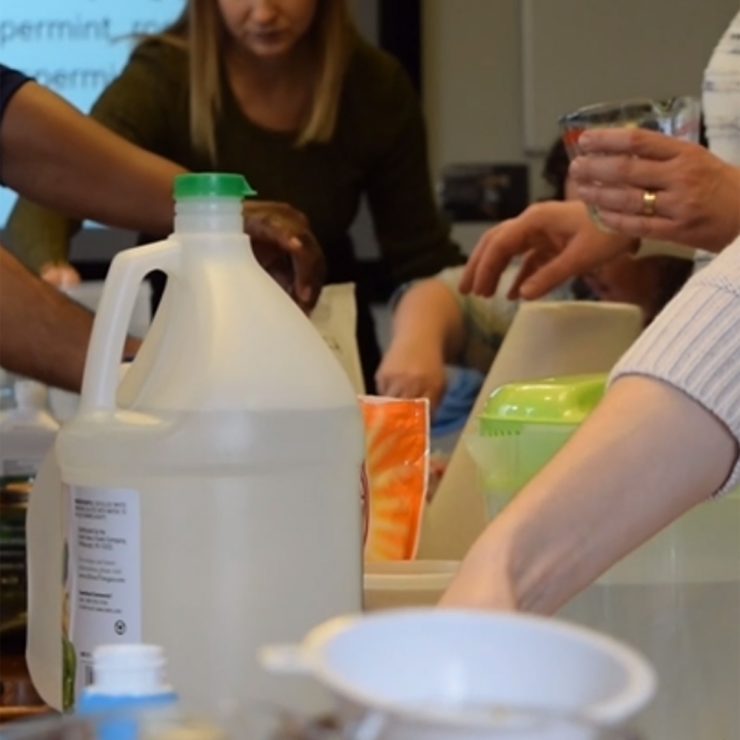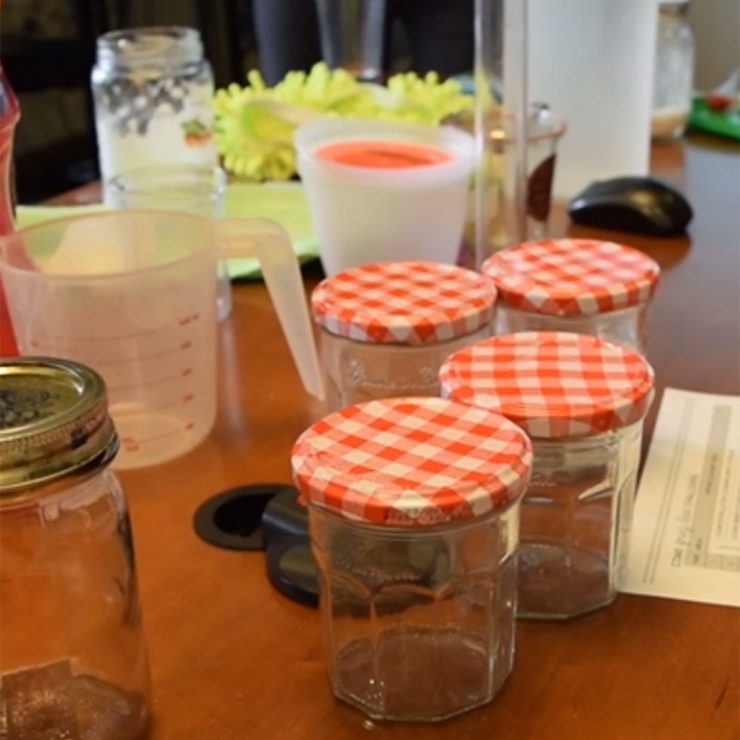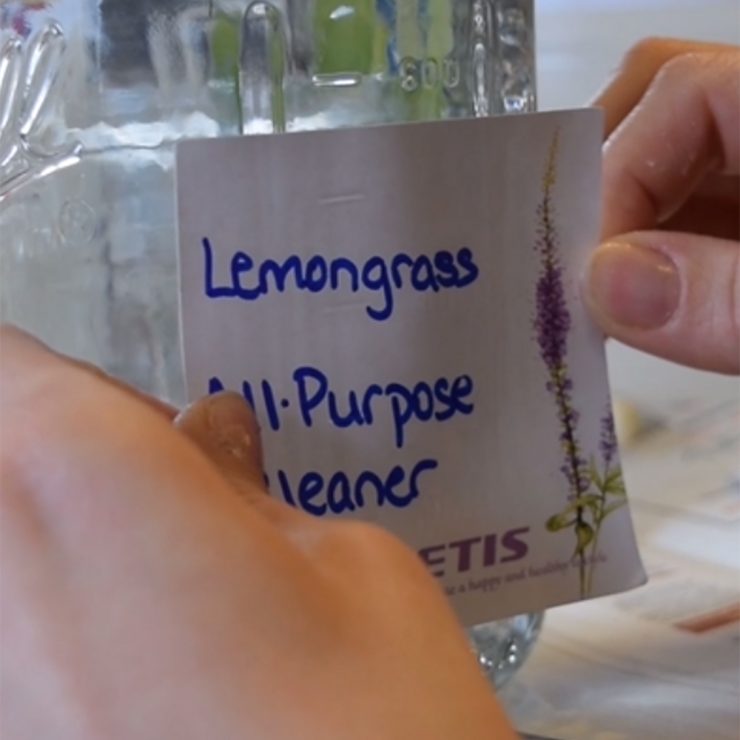By: Christine Wysocki
Have you seen what is in common household cleaners?
Common household cleaners live comfortably in our cabinets and closets, but it’s time to disrupt the status quo! Traditional household cleaners found on store shelves contain chemicals capable of causing cancer (carcinogens), disrupting the endocrine (hormonal) system, and irritating skin, eyes, and lungs. A seemingly simple ingredient like “fragrance” is a major culprit; manufacturers are not required to share specific ingredients because combinations are considered proprietary.
“A single fragrance in a product can contain a mixture of hundreds of chemicals, some of which (e.g., limonene, a citrus scent) react with ozone in ambient air to form dangerous secondary pollutants, including formaldehyde.” (1)
Skip the name brand cleaners for healthier, greener store-bought and homemade alternatives. Here are some reasons and ways to switch:
- For your health
Choose household cleaners made with simple, easy-to-say ingredients that are less harmful than commercial chemicals to safeguard your health and the health of family, friends, and pets.
Beware
Some manufacturers use a tactic called “greenwashing” to falsely present products in a positive environmental light. Beware of misleading labeling! A product labeled “natural” or “organic” does not mean it is healthy. Even if a bottle is marked “free and clear” or “eco-friendly,” make sure to verify these claims: always flip the container and read the ingredients.
- For your wallet
Traditional cleaning products are expensive, when compared to homemade alternatives! Buy a few staple ingredients to whip up multiple types and batches of your favorite cleaning products for less than you would spend on commercial options.
- For the planet
Buying cleaners in brand new plastic bottles is wasteful. Swap single-use plastic and store-bought cleaners with refillable glass bottles and DIY mixtures to reduce the demand on toxic chemicals produced for the purpose of manufacturing common household cleaners.
While it may seem like a hassle, learning about ingredients in products you use on a regular basis is empowering. Exposure to harmful chemicals from household cleaners is unnecessary, if you know which ingredients to avoid. Verify safety of ingredients with sites such as the U.S. National Library of Medicine (PubChem and TOXNET) or Agency for Toxic Substances & Disease Registry (ASTDR Toxic Substances Portal).
What do you need for DIY cleaners?
Here are some ingredients often found in DIY cleaning recipes:
- White distilled vinegar
- Baking soda
- Castile soap
- Rubbing alcohol
- Hydrogen peroxide
- Citrus fruit peels
- Salt
- Water (distilled and tap)
Again, even natural products can be harmful in the wrong dose and application! Follow recipe quantities and practice middle school science class safety rules. Also, make note of manufacturer care instructions for products you clean (i.e., use the right cleaner for the job to avoid damage to surfaces).
In addition to ingredients, you will need simple household materials for assembly: Measuring cups, spray bottles, airtight containers, microfabric cloths, scoops or spoons, and funnels are all useful tools for mixing your own cleaning products. Repurpose empty jars to hold DIY cleaners and old t-shirts as rags to up the eco-friendliness of your cleaning routine.
What’s next?
You’ve taken care of Step 1 and verified the common household cleaners in your home that need to be replaced with healthier products. Next, how do you deal with what you no longer want to keep? As you transition, please keep products you no longer want out of the landfill and plumbing! Here are a few options:
- Use up the products and vow to replace them with healthier options. Recycle and reuse empty packaging, whenever possible.
- For products considered hazardous household waste, take partially empty containers to a disposal center. Visit your municipality’s website for specific details and guidance.
Now it’s time to make your own cleaning products! Here are a few online resources that offer cleaning recipes and general cleaning advice:
For anyone not interested in at-home chemistry, buying healthier off-the-shelf products is easier than ever! Companies with an environmental and ethical conscience can be found online and at local retailers—just make sure to verify the ingredients before you buy.
Note: This is not an official endorsement by Straughan Environmental, Inc., and only reflects the opinion of the author.
(1) Photochemical aging of secondary organic aerosol particles generated from the oxidation of d-limonene. Walser ML, Park J, Gomez AL, Russell AR, Nizkorodov SA J Phys Chem A. 2007 Mar 15; 111(10):1907-13.
Potera C. (2011). Scented products emit a bouquet of VOCs. Environmental health perspectives, 119(1), A16. doi:10.1289/ehp.119-a16
Dodson, R., Nishioka, M., Standley, L., Perovich, L., Brody, J., & Rudel, R. (2012). Endocrine Disruptors and Asthma-Associated Chemicals in Consumer Products. Environmental Health Perspectives, 120(7), 935-943. Retrieved from http://www.jstor.org/stable/41548773


